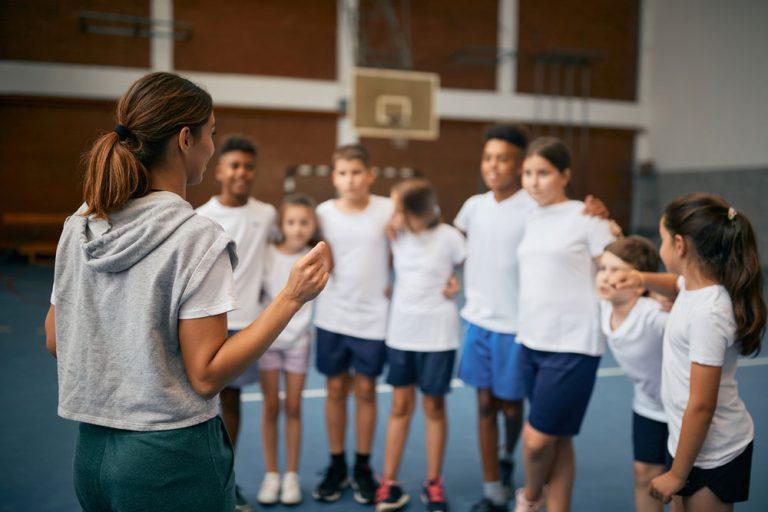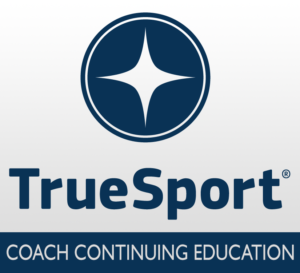How to Create Your Goal Pyramid with Paralympian Trevon Jenifer
USA Cheer has partnered with TrueSport, to provide new educational tools to equip coaches, parents and young athletes with the resources to build life skills and core values for success in sports and in life. TrueSport, a movement by the U.S. Anti-Doping Agency, inspires athletes, coaches, parents, and administrators to change the culture of youth sport through active engagement and thoughtful curriculum based on cornerstone lessons of sportsmanship, character-building, and clean and healthy performance, while also creating leaders across communities through sport.


 Since he was only a few years old, Trevon Jenifer has focused on athletic goals and how to achieve them. With that focus and some strategic goal setting, Jenifer has gone on to become a four-time Paralympian in the sport of wheelchair basketball.
Since he was only a few years old, Trevon Jenifer has focused on athletic goals and how to achieve them. With that focus and some strategic goal setting, Jenifer has gone on to become a four-time Paralympian in the sport of wheelchair basketball.
While his goals in life and sport have changed over the decades, he's been able to meet each challenge while utilizing his pyramid approach to goal setting.
It takes more than determination
Determination and grit got Jenifer through his elementary school and high school sporting career, he admits. He would see something he wanted to do—like wrestling—and go after it. But when he got to college, he was struck by how high the bar was for the wheelchair basketball team, and how far he suddenly was from the top. "When I got there, I realized that I needed to implement some sort of structure in order to see the progress I needed to achieve," he says. "My freshman year, I realized that talent was only part of the equation. I would need a plan to accomplish my big goals."
Goals in sport are goals in life
You can't set a goal in sport without it impacting how you spend the rest of your day. It's no surprise that Jenifer first had this realization in college. Not only was the competition level higher, but college was the first time he had the independence to make decisions regarding his sleep, nutrition, class schedule, training schedule, and every other facet of his life. "In college, I realized that no one was going to tell you what to do, it's up to you," he says. "And those decisions impacted his sport: You need to eat well, sleep enough, work with the trainers and other experts who are available to you, and also do everything you need to do for the team and for school. It's all part of the equation."
Break down the goal
When Jenifer is setting a goal, he looks at the destination—and then backtracks to create the route. Whether your goal is six months or 10 years away, you need to plan out the steps. "No matter what your goal is, it's important to look ahead, and then look at what you need to do along the way to hit that goal," he says. "If your goal is to become a lawyer, then it starts with getting good grades in high school, going to undergrad and doing a program that makes sense for getting into law school, taking the LSATs, getting into law school, doing an internship at a firm you respect—all of that happens on the way to achieving the main goal. But you have to think about all the steps, not just the outcome."
Create a goal pyramid
Heading into the 2008 Paralympic cycle, Jenifer knew he wanted to make the team but also knew he had a long way to go before he would be ready. And as a visual learner, he knew having his approach organized in an easy-to-view way would help. "I created this pyramid for my goal of making the team and winning the gold medal, and I posted it on my dorm room wall," he recalls. His goal pyramid allowed him to put his big outcome goal at the top, and work his way down to the bottom, where the process goals that would help him achieve that outcome would provide the foundation.
"At the top was making the team. Under that, there were slightly smaller goals that I would need to accomplish to get there, like becoming an academic All American and winning National Championships. Under that, I put things that I needed to do during each month. At the bottom—the biggest part of the pyramid—was where the important stuff was. Things like working out a certain number of days per week or hitting a certain number of free throws. I know that the top of the pyramid was where I wanted to get to, but to get there, I would need to check off the little boxes at the bottom."
Focus on the bottom of the pyramid, not the top
For Jenifer, the bottom of the pyramid—those small daily and weekly actions—were the most critical to focus on. "We tend to get so focused on the big goal that we neglect the little goals that we should be focused on in order to get there," Jenifer says. "The little goals are the ones you can work on every day, and they can shift to fit where you are in your journey. If your goal at the top is to run a marathon, your pyramid's base will be focused on developing consistent running habits. Maybe we need to change a block to add more jogs/walks because you weren't ready for full runs, but that's okay. The goal at the top stays the same, you're just getting there in a slightly different way. And there's always something you can be working on, rather than just looking at that faraway big goal."
Acknowledge the sacrifices
The other benefit of creating a pyramid for your goal is that you can see what it's going to take to get to the big goal, says Jenifer. "I always tell people that achieving a goal requires some kind of sacrifice," he explains. "People see the gold medal, and that's the top of the pyramid, but they don't see all of the building blocks that came under it: They don't see the time in the gym instead of time spent out with friends, or missing birthdays and weddings because of travel schedules. Creating that pyramid shows you what the cost of the goal will be, and you can decide if it's worth it for you."
See the little wins
"Our society is so focused on getting instant gratification, and when we don't get it right away, we're discouraged and ready to give up on the goal," Jenifer says. "I like the pyramid because it shows how this is all a process, and there are so many small wins at the base of the pyramid that we can celebrate along the way." You also need to be the one to celebrate the progress you're making, he adds, because you're the one who cares the most. "I have to be my biggest cheerleader as much as I've been my biggest critic, which means doing things like acknowledging the little wins and making sure that I'm using positive language and affirmations throughout the day. Celebrate the little successes, the little victories, because ultimately, those little victories will add up to a huge win, even if it's not the ultimate goal."
Failure is inevitable—but not a bad thing
On your goal pyramid, you may not reach the top. But as Jenifer said, you will make progress. "Failure is inevitable in life and especially in sport," Jenifer says. "That's why you need to understand why you want the goal in the first place. And at the same time, you need to remember that you aren't your goal. Your goal can support you becoming the best version of yourself, but if you don't achieve the goal, you're still the same person."
Takeaway
Jenifer uses a goal pyramid, with his primary goal at the top, to achieve his foundational and big-picture goals. Using the pyramid allows him to check in regularly on progress, see and celebrate daily wins, and understand what’s required when pursuing a big goal.
What is TrueSport?
The TrueSport Champion Network is a community of coaches, parents, program directors, and athletes who believe in the power of youth sport to build life skills and core values for success both on and off the field. Join TrueSport Champion Network to help promote the positive values of cheer, dance, and STUNT!
The TrueSport Coaching Education Program empowers coaches—the most significant influencers in young athletes’ lives—with a transformative learning opportunity to obtain the knowledge and resources to cultivate, champion, and uphold the rich promise and highest potential of sport.
Additional Training Modules from TrueSport
USA Cheer is proud to partner with USADA’s TrueSport® to bring relevant educational content to the Cheer and STUNT community in order to promote a positive youth sport experience. We are excited to provide access to TrueSport’s experts that take coaching beyond skills and help truly develop the overall athlete by building life skills and core values for success on and off the mat, sideline, field, and court.
Feel free to share these resources with your coaching staff, parents, or athletes!
About TrueSport
TrueSport®, a movement powered by the experience and values of the U.S. Anti-Doping Agency, champions the positive values and life lessons learned through youth sport. TrueSport inspires athletes, coaches, parents, and administrators to change the culture of youth sport through active engagement and thoughtful curriculum based on cornerstone lessons of sportsmanship, character-building, and clean and healthy performance, while also creating leaders across communities through sport.
For more expert-driven articles and materials, visit TrueSport’s comprehensive library of resources.
This content was reproduced in partnership with TrueSport. Any content copied or reproduced without TrueSport and the U.S. Anti-Doping Agency’s express written permission would be in violation of our copyright, and subject to legal recourse. To learn more or request permission to reproduce content, click here.



